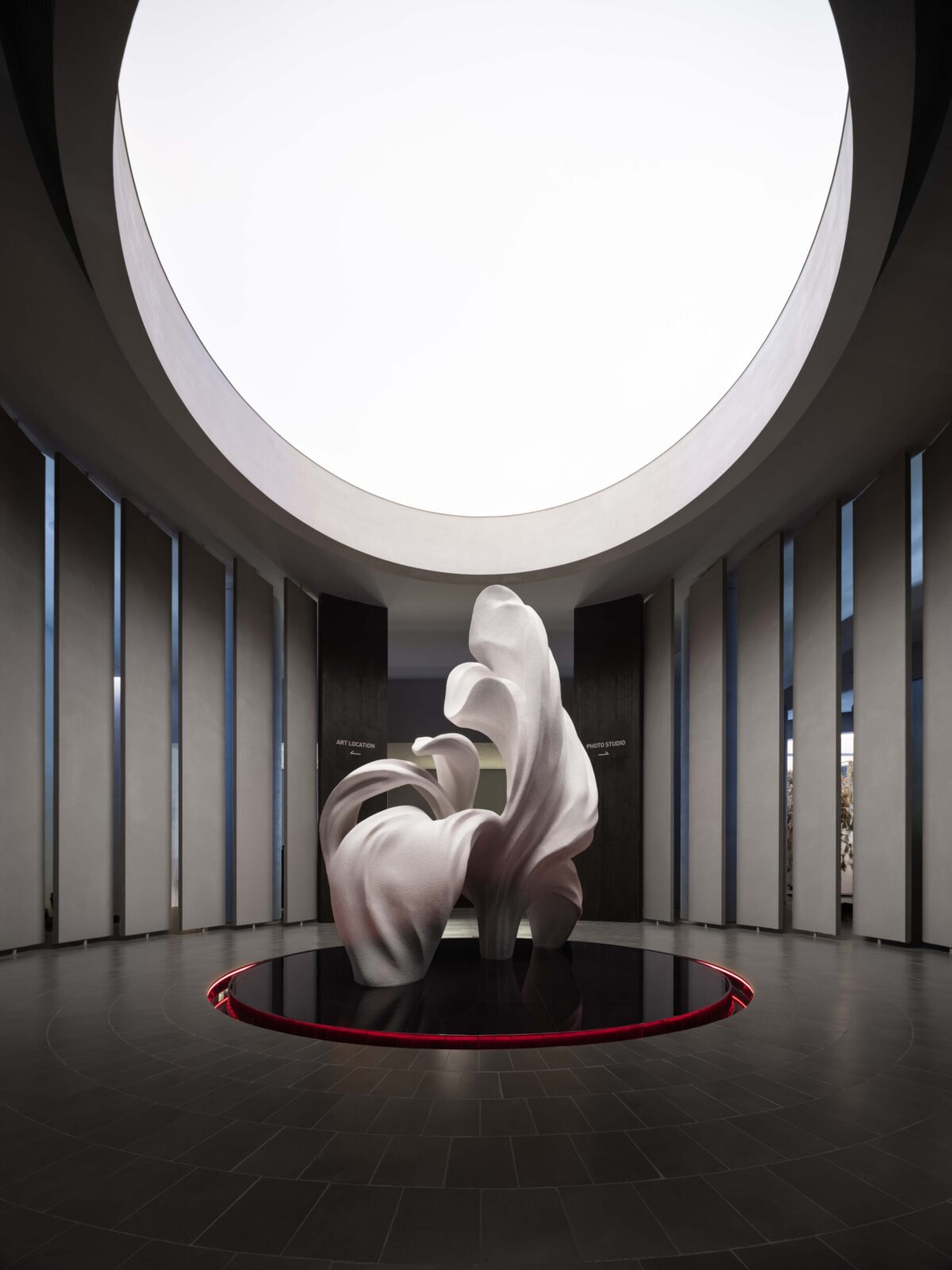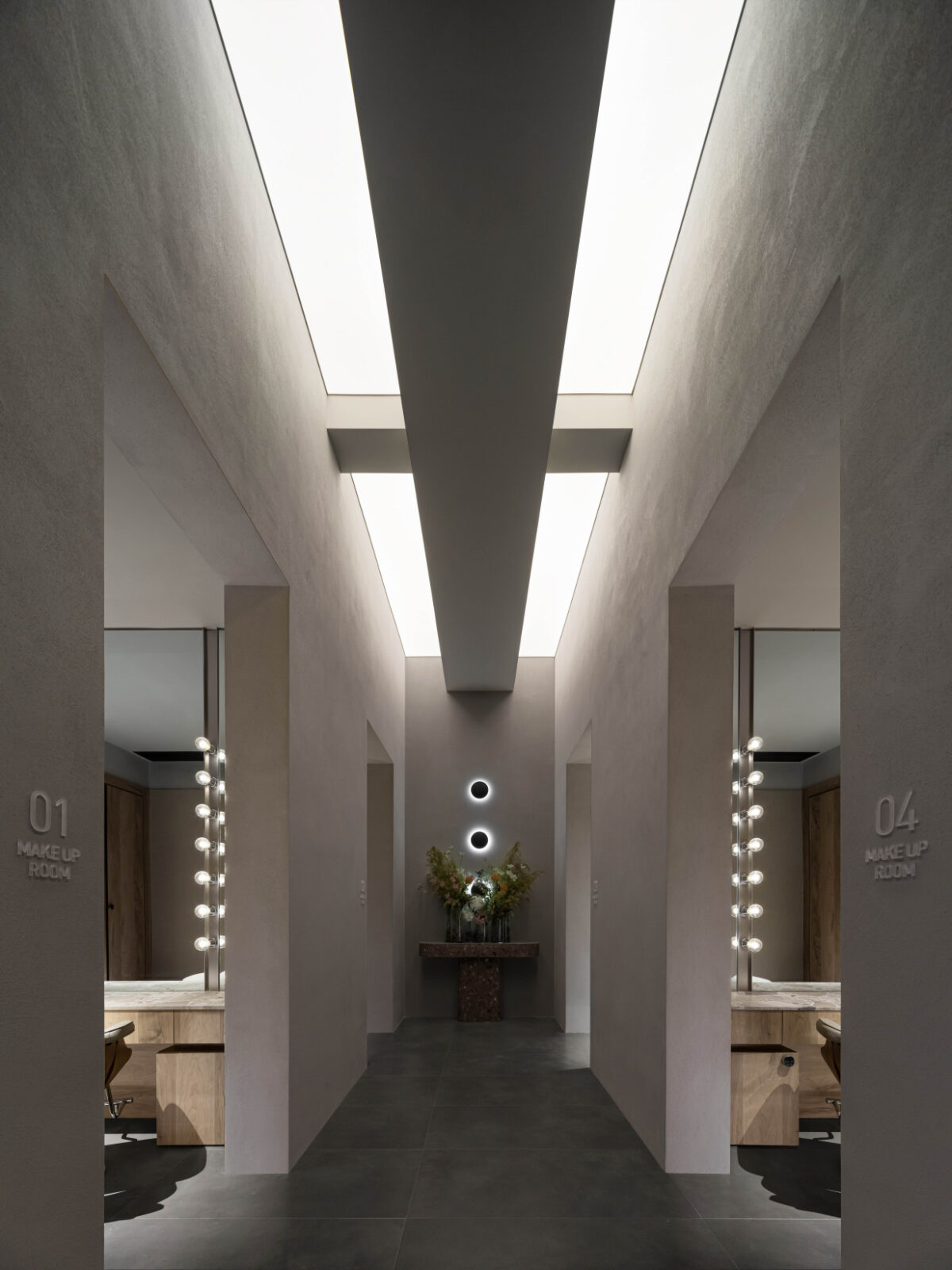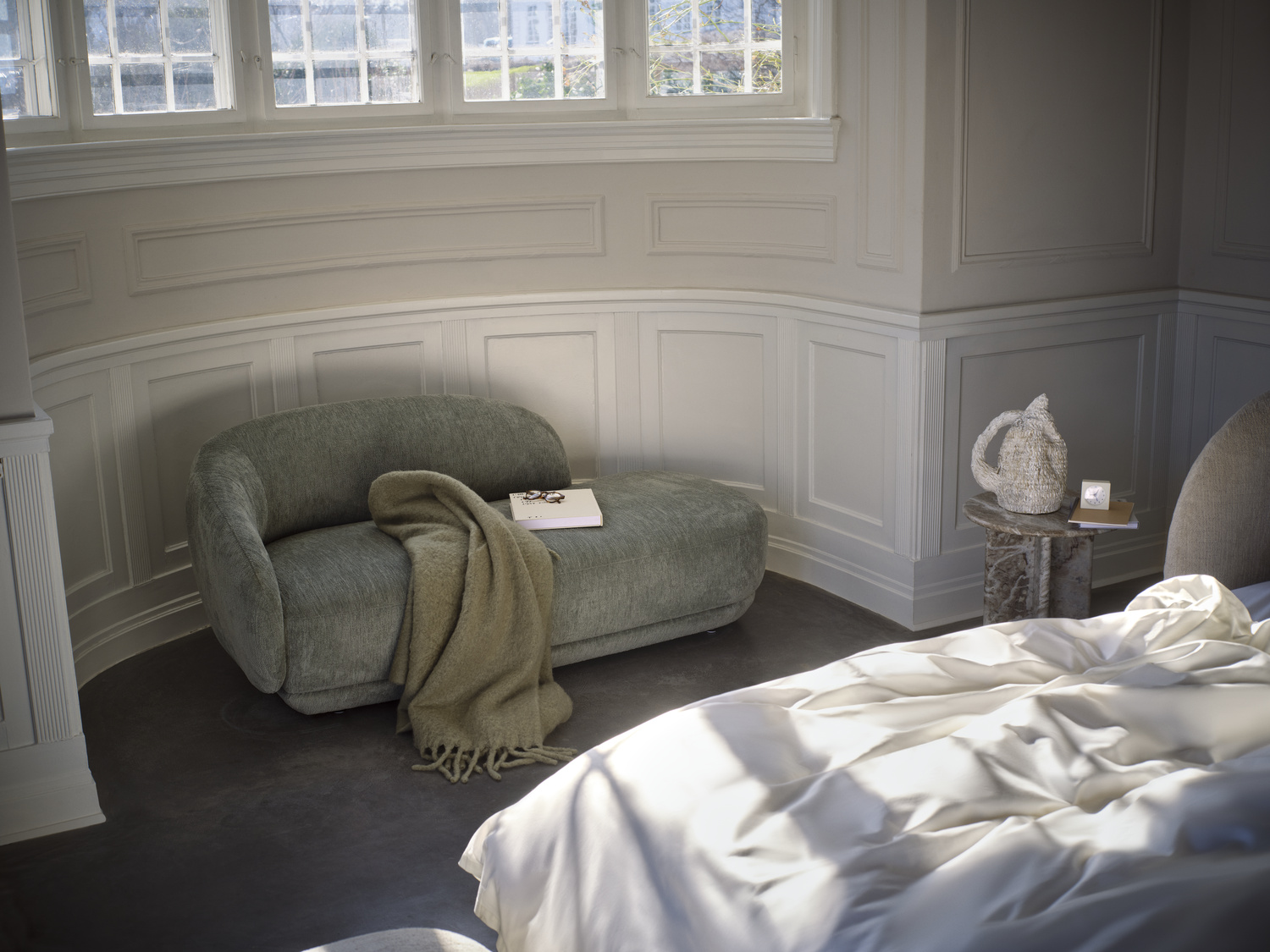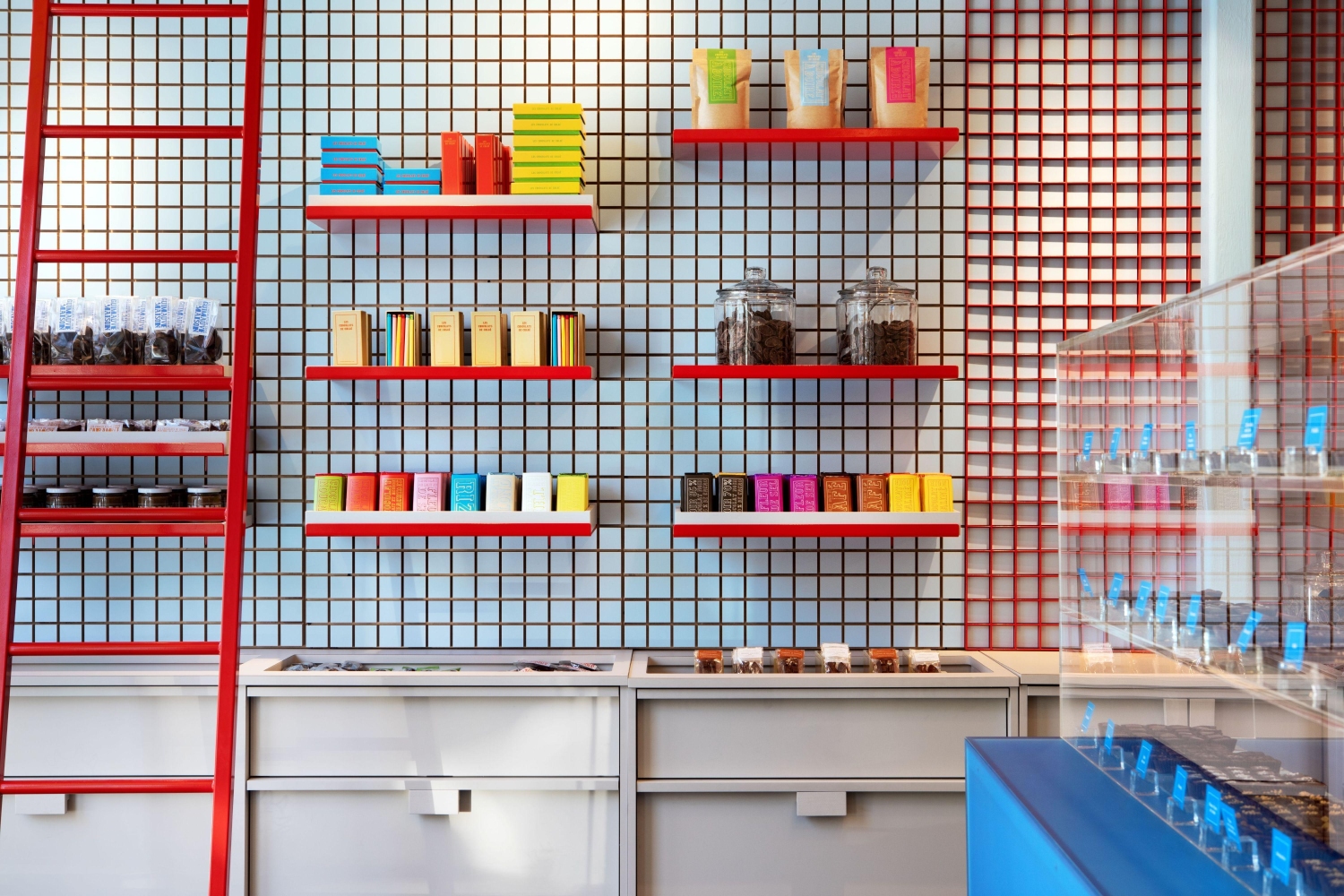In contemporary design discourse, there’s a growing recognition that gallery and exhibition spaces need not only to display art, they can be art. This concept, often described as immersive architecture, emphasizes sensory engagement, narrative flow, and emotional resonance. As scholars note, when architecture transcends its supportive role and becomes an active participant in storytelling, the visitor’s experience shifts from passive viewing to co-creative immersion.

Lan‘ Art Space, Aviva is a compelling example. Recently named Jury’s Favorite in Interior Design – Exhibition / Gallery at the BLT Built Design Awards, this space, designed by Reshape Structure and lead designer Xuan Zhang, becomes a living pulse rather than a silent backdrop.

Stepping inside, the vestibule greets you with LAN‑FLEURIT, a sculptural bloom that seems to unfurl from the wall and floor. It embodies calm, movement, rebirth, like a quiet wave rising into consciousness. The design doesn’t rely on walls to divide; instead, light and shadow weave around the curves, weaving a gentle narrative that resonates emotionally. Every arch and rhythm seems deliberate, inviting the visitor to wander, reflect, and become part of the space’s story.
In the backyard, LAN‑FLOW completes the journey. Wooden forms gather and cascade like soft waves frozen mid-motion, lightened in texture, rich in symbolism. Here, architecture breathes: walls don’t confine, they gesture; materials carry emotion; space feels alive.


The BLT Awards recognize design that goes beyond aesthetics, that embraces cultural and emotional intelligence. Lan’s embodies that ideal: a space that feels thought, felt, and nurtured, not assembled or staged.
To close on a note of reflection: Lan’ Art Space isn’t an art space in the usual sense. It moves, it breathes, it blooms. It marks a compelling shift in design philosophy, where interiors are not static vessels but living landscapes of emotion and thought.










